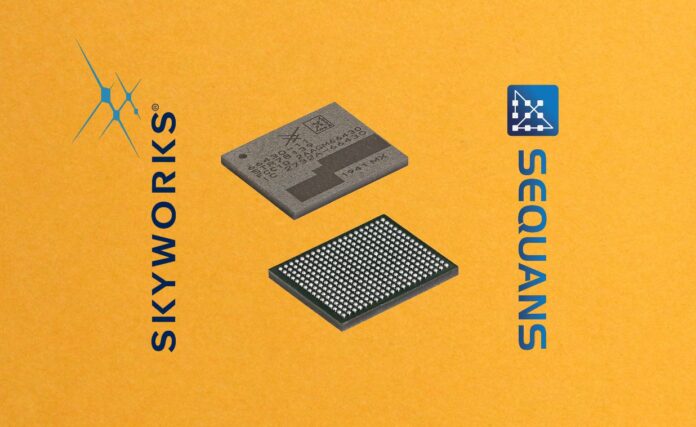Semiconductor firm Skyworks Solutions claims to have produced the world’s smallest dual-mode cellular IoT system-in-package (SiP) solution. The US outfit partnered with IoT chip and module maker Sequans Communications on the product, numbered SKY66431, to combine the France-based firm’s Monarch 2 modem with its own radio-frequency (RF) front-end solution.
Skyworks has also released a new portfolio of ‘jitter attenuators’ for high-speed networking and data centre equipment, notably as new 5G networks are rolled out and data traffic spirals upwards on wider internet infrastructure. The new Si536x family goes with the firm’s current Si539x jitter attenuating clocks, to cater to a range of network timing needs for designers and vendors.
The SKY66431 solution, featuring the Sequans LTE-M and NB-IoT modem, is pitched for utility meters, asset trackers, security systems, medical equipment, telematics accessories, and sundry battery-powered IoT devices. Skyworks and Sequans made the case for LTE-M and NB-IoT – as the LTE-native twin-tech supposed to kickstart the ‘massive IoT’ surge, defined as massive machine-type comms (mMTC) in the holy trinity of new 5G capabilities – to meet stringent IoT demands for durability, longevity, and reliability.
A statement described it as a “multi-band, multi-chip” SiP for “high performance connectivity with ultra-low power consumption”. Its native 23 dBm front-end module leverages Skyworks’ RF and packaging design to optimise reliability in demanding environments and minimise its physical footprint – to “miniaturise and encapsulate silver-free conformal shielding”. In other words, the platform provides flexible design and long battery life, without scrimping on low-power wide-area (LPWA) IoT performance. General availability is expected in the first quarter of 2023.
Stefan Fulga, senior director of marketing for IoT and emerging products at Skyworks, said: “As modern connected devices evolve, Skyworks’ extensive expertise within this market and advanced packaging technologies allow us to drive improvements in power consumption, size and advanced connectivity features to meet the rigorous performance requirements of our customers. The SKY66431 SiP enables simplified, yet high performance designs that operate reliably worldwide, accelerating time-to-market for our customers.”
Georges Karam, chief executive at Sequans, said: “The new SKY66431 SiP is a compelling IoT connectivity solution. It is a comprehensive, all-in-one platform combining the technologies of two industry leaders who have included all of the critical components needed in one powerful, tiny SiP that is ideal for a wide range of IoT applications, from wearables, including medical devices and trackers, to sophisticated smart utility meters, requiring advanced packaging and capabilities.”
Separately, the new Si536x family of attenuators from Skyworks provides “frequency flexibility and clock tree on-a-chip integration in a compact clock IC solution”, the company said. It features “up to 18 clock outputs featuring <55 fs RMS jitter, enabling optimal transceiver performance”, it said.
The increased jitter margin also helps de-risk product development and accelerate time to market for networking equipment vendors. The point is increasing demand for data bandwidth, notably with 5G networks, is driving a need for 400, 600, and 800 gigabit Ethernet links, with 800 gigabit expected as the standard fibre throughput rate in data centres by 2025, according to Dell’Oro Group. This is, in turn, driving demand for high-speed serializer/deserializer blocks (as high as 224 gigabit) and “coherent” optical technologies, besides.
Skyworks stated: “These high-speed systems require multiple clocks at different frequencies, signaling formats and voltage levels with ultra-low jitter… [Our Si536x] products address the next generation of high-speed communications’ designs, allowing our customers to take advantage of the highest performance, lowest jitter clocks available.” Designers can configure clock tree designs with the company’s ClockBuilder Pro software, which includes design-rule checks, power consumption estimates, and a crosstalk wizard.

